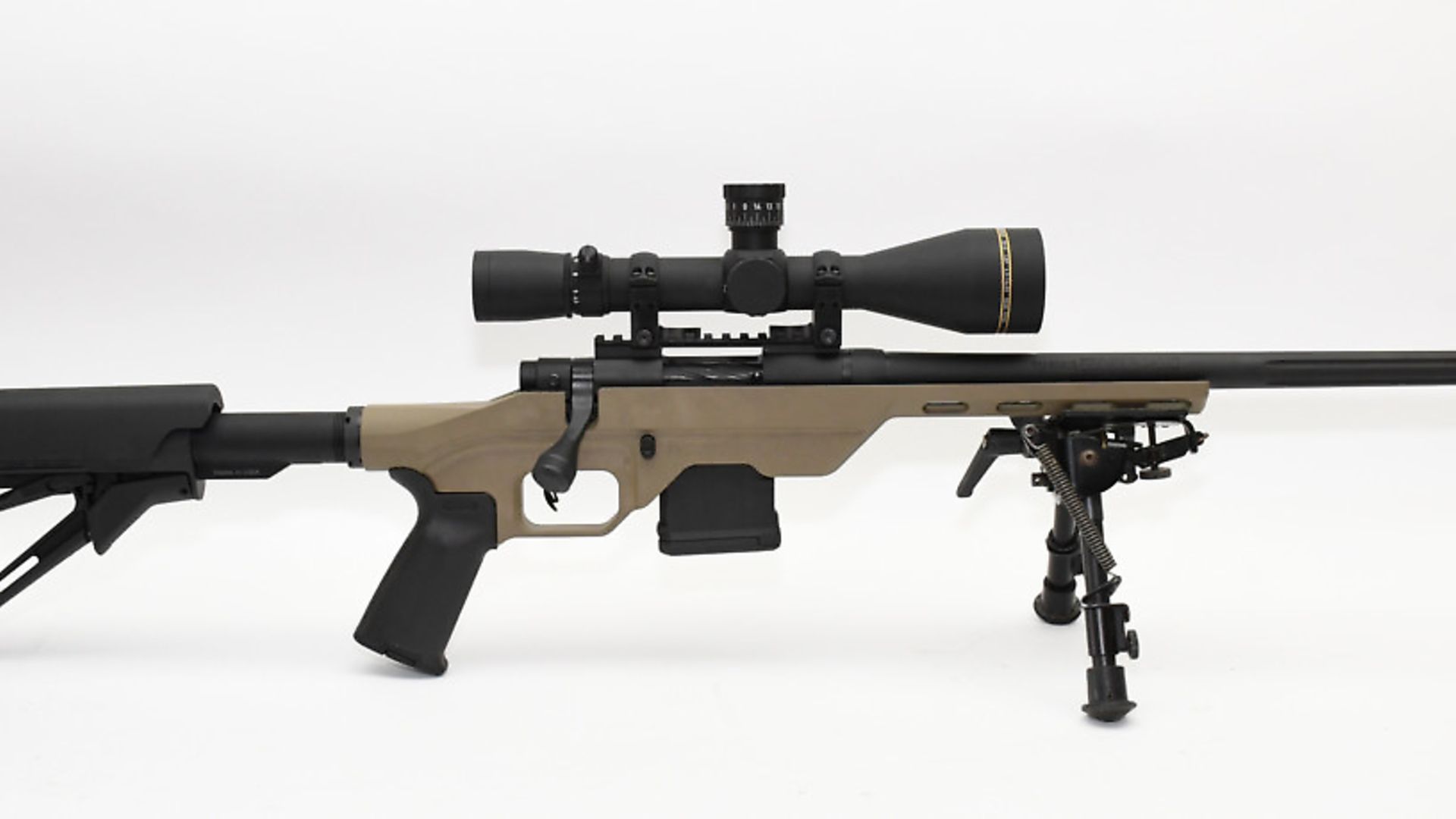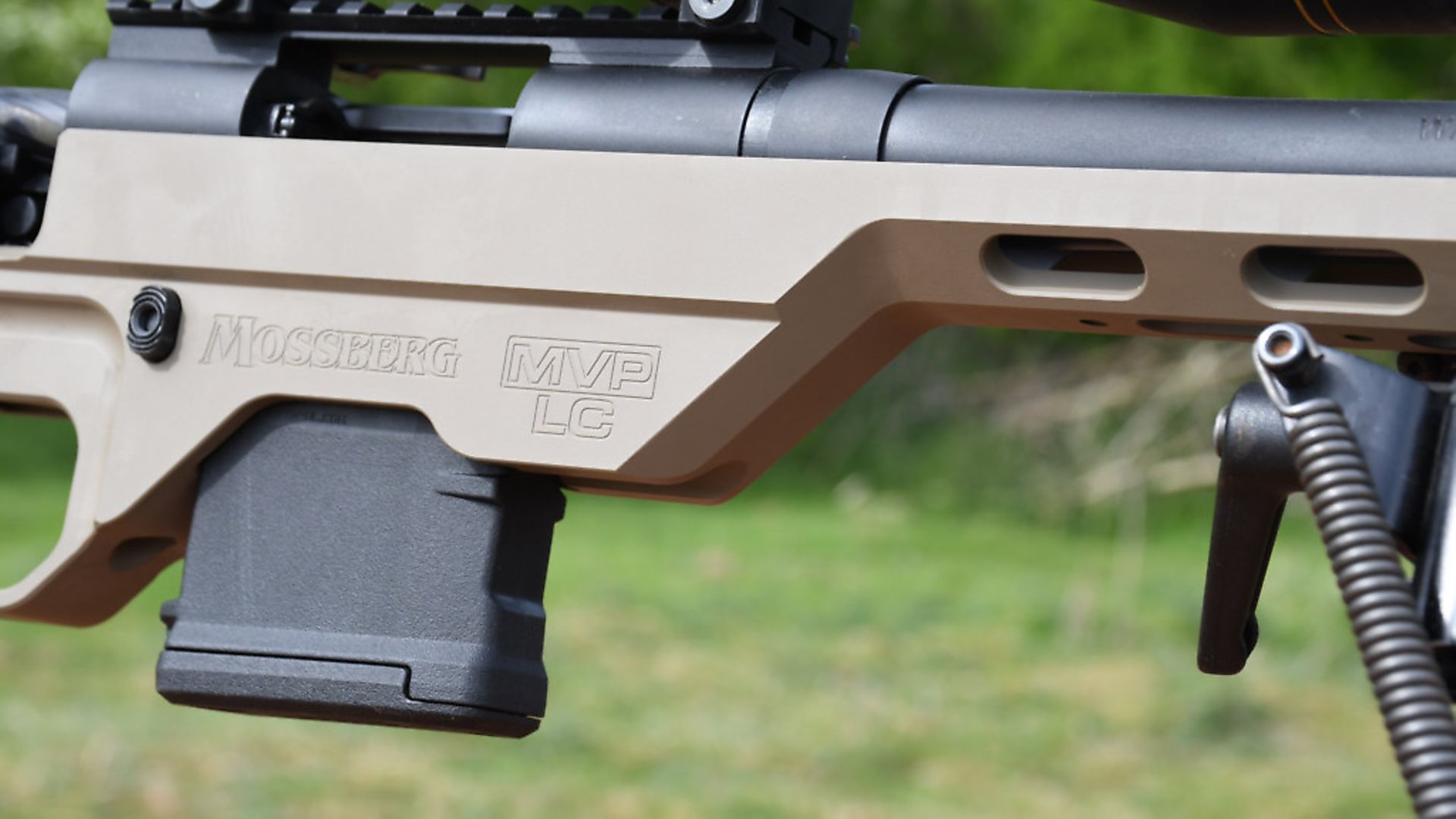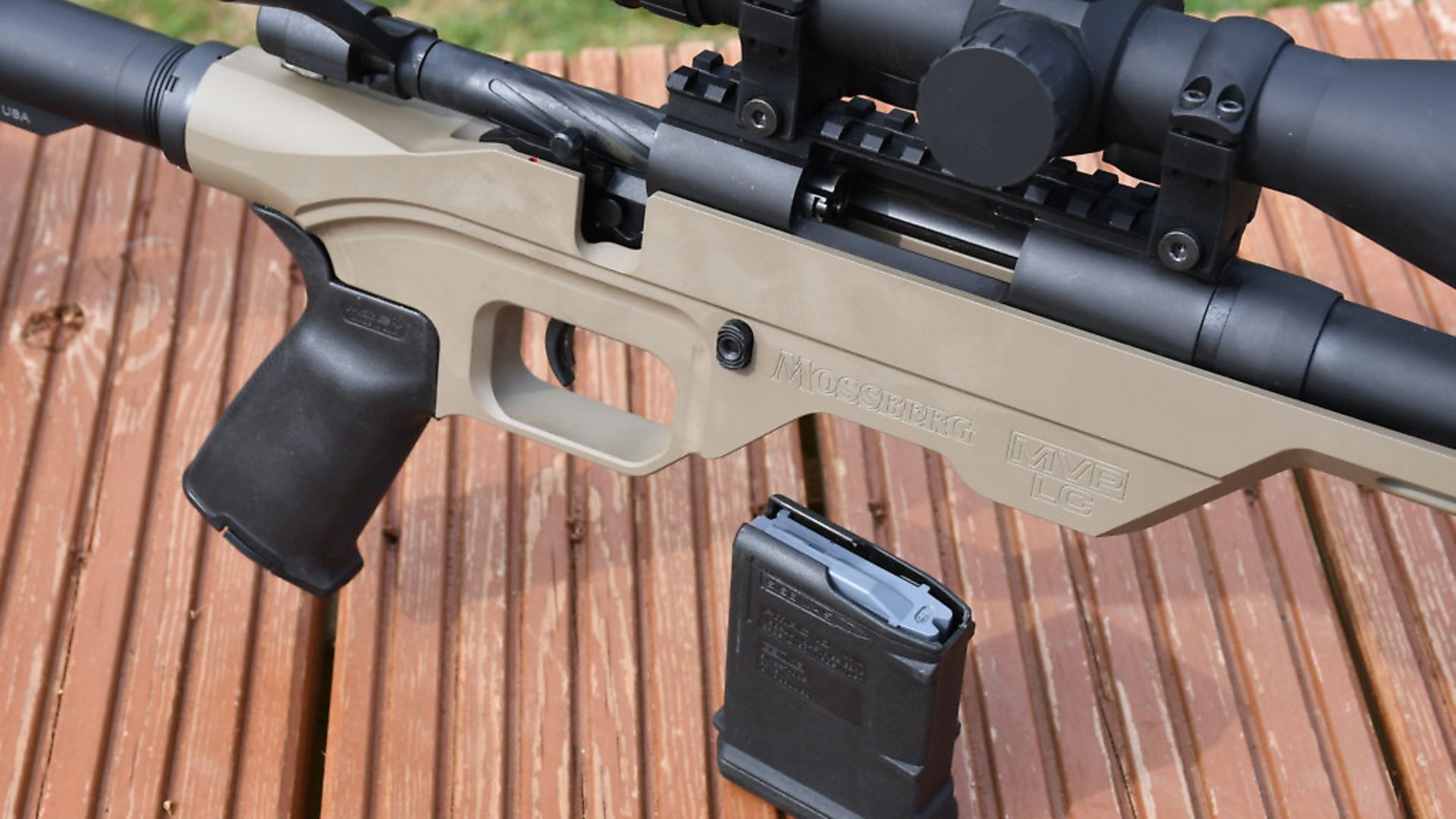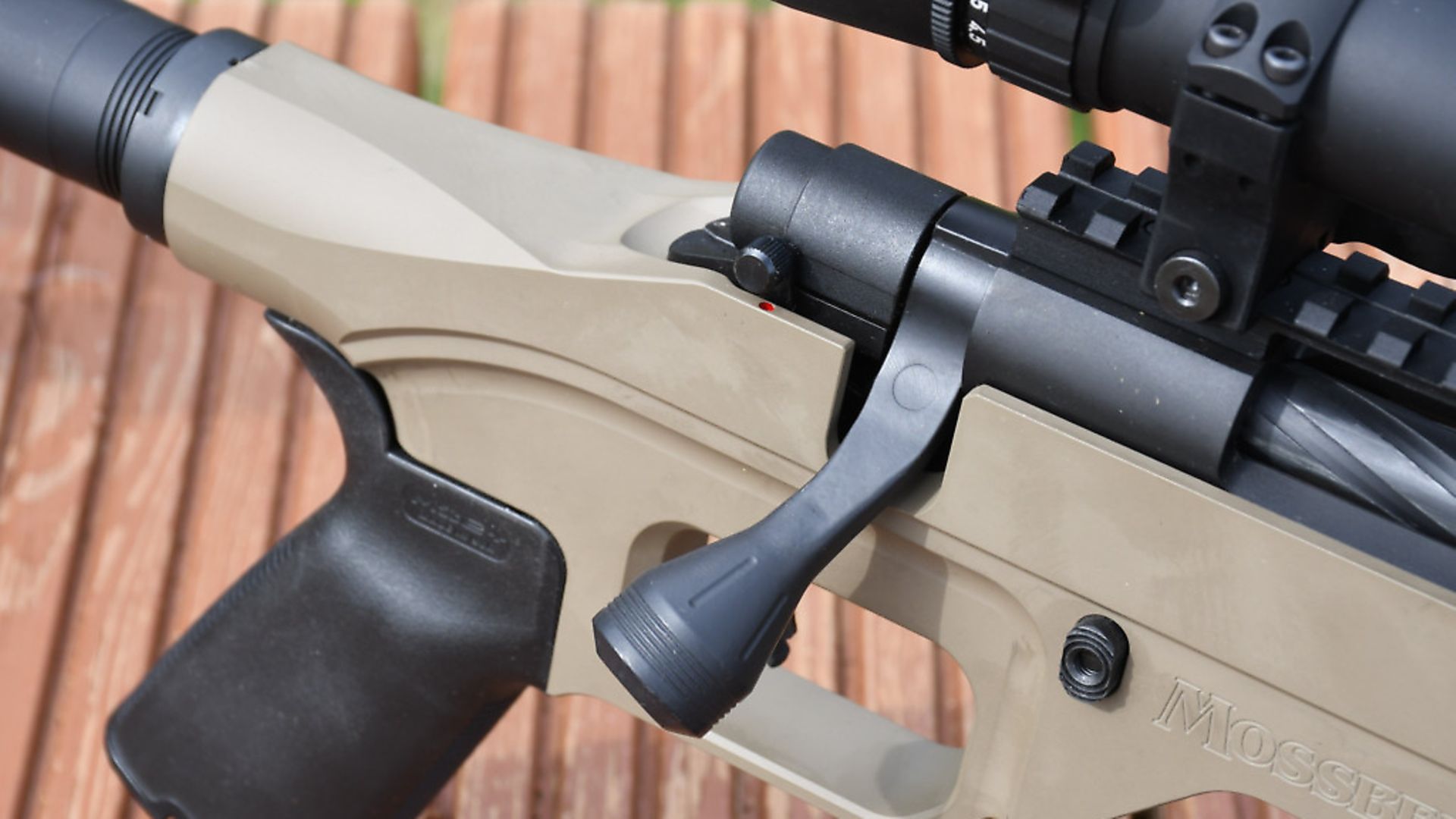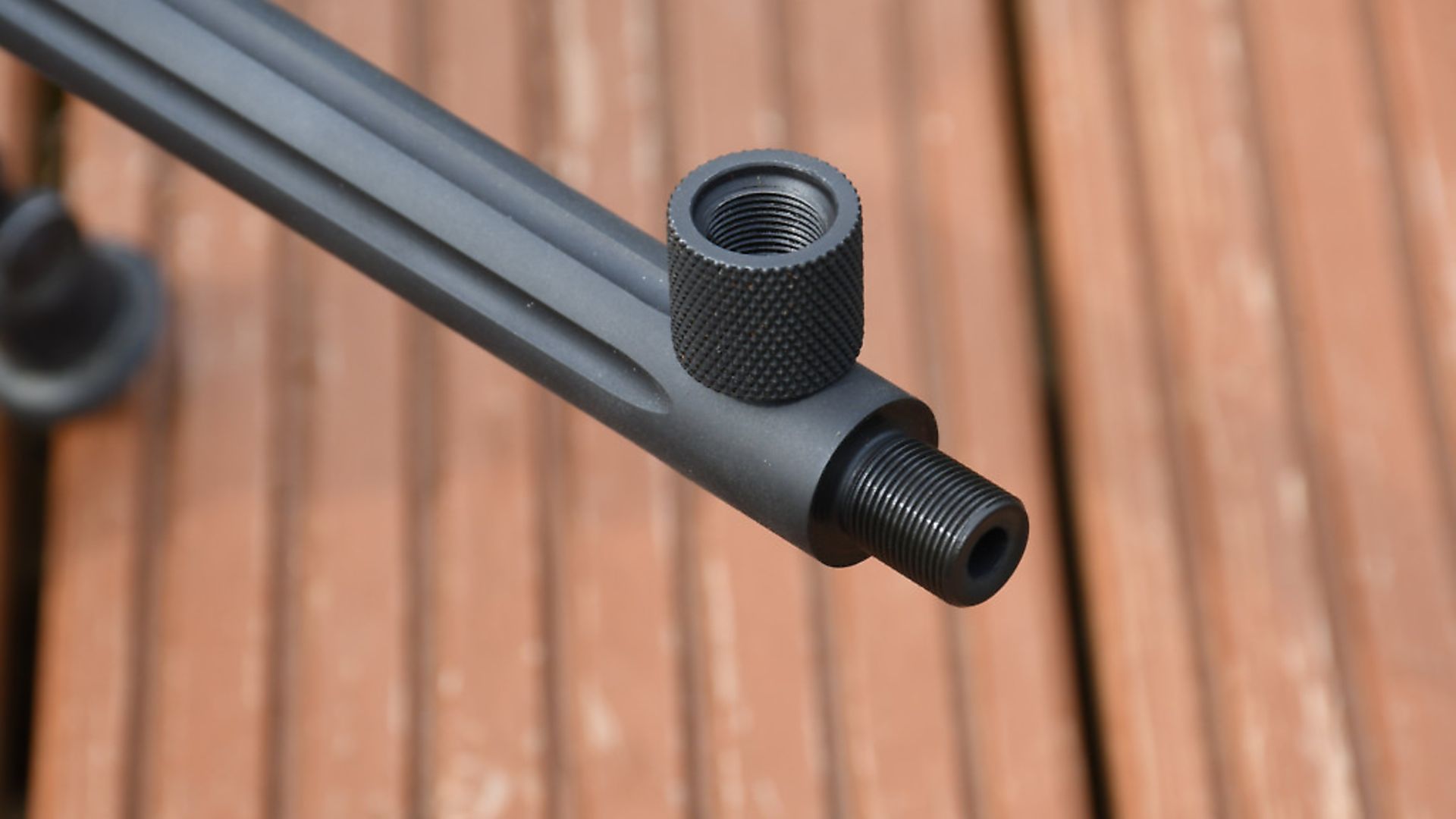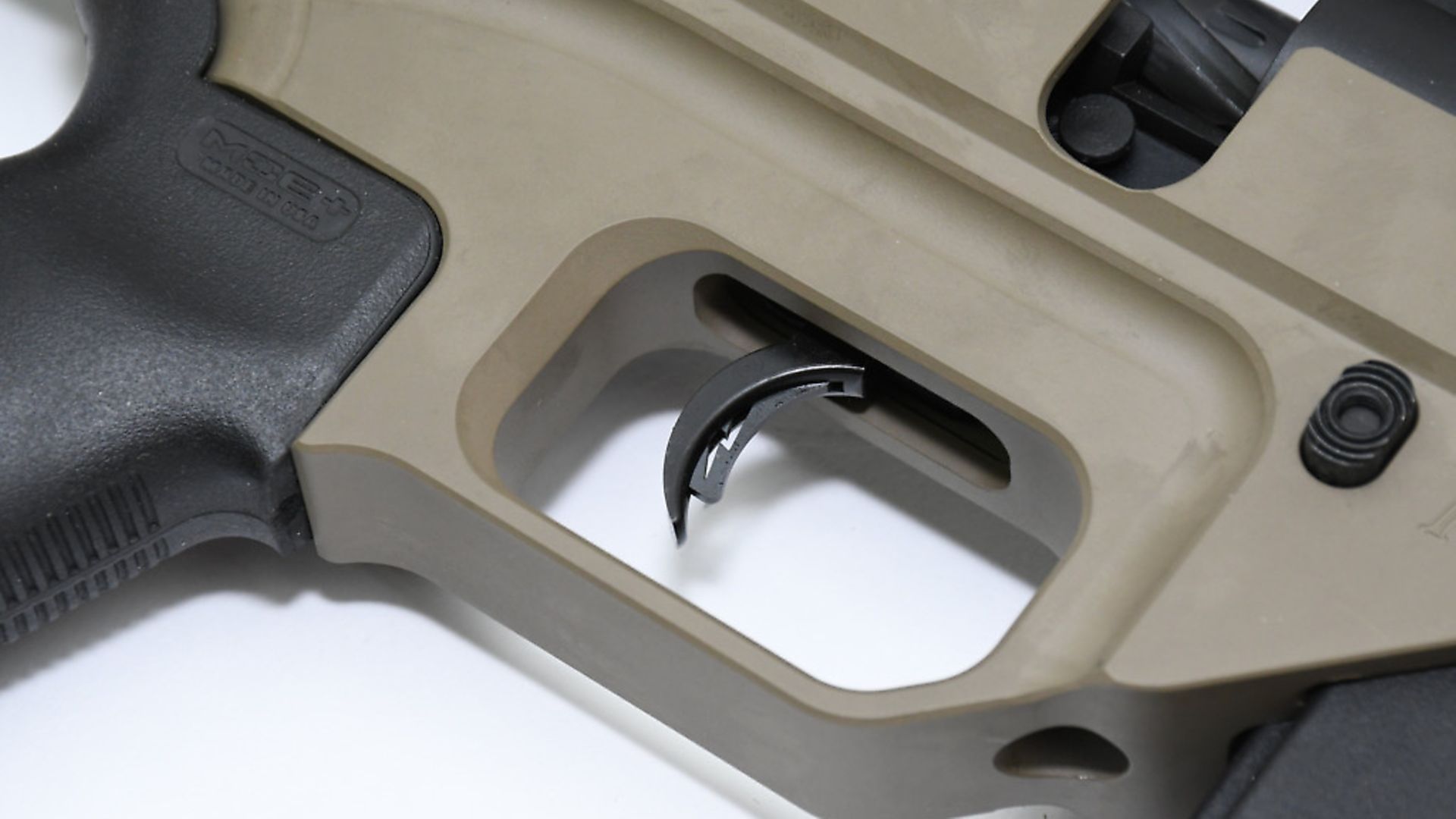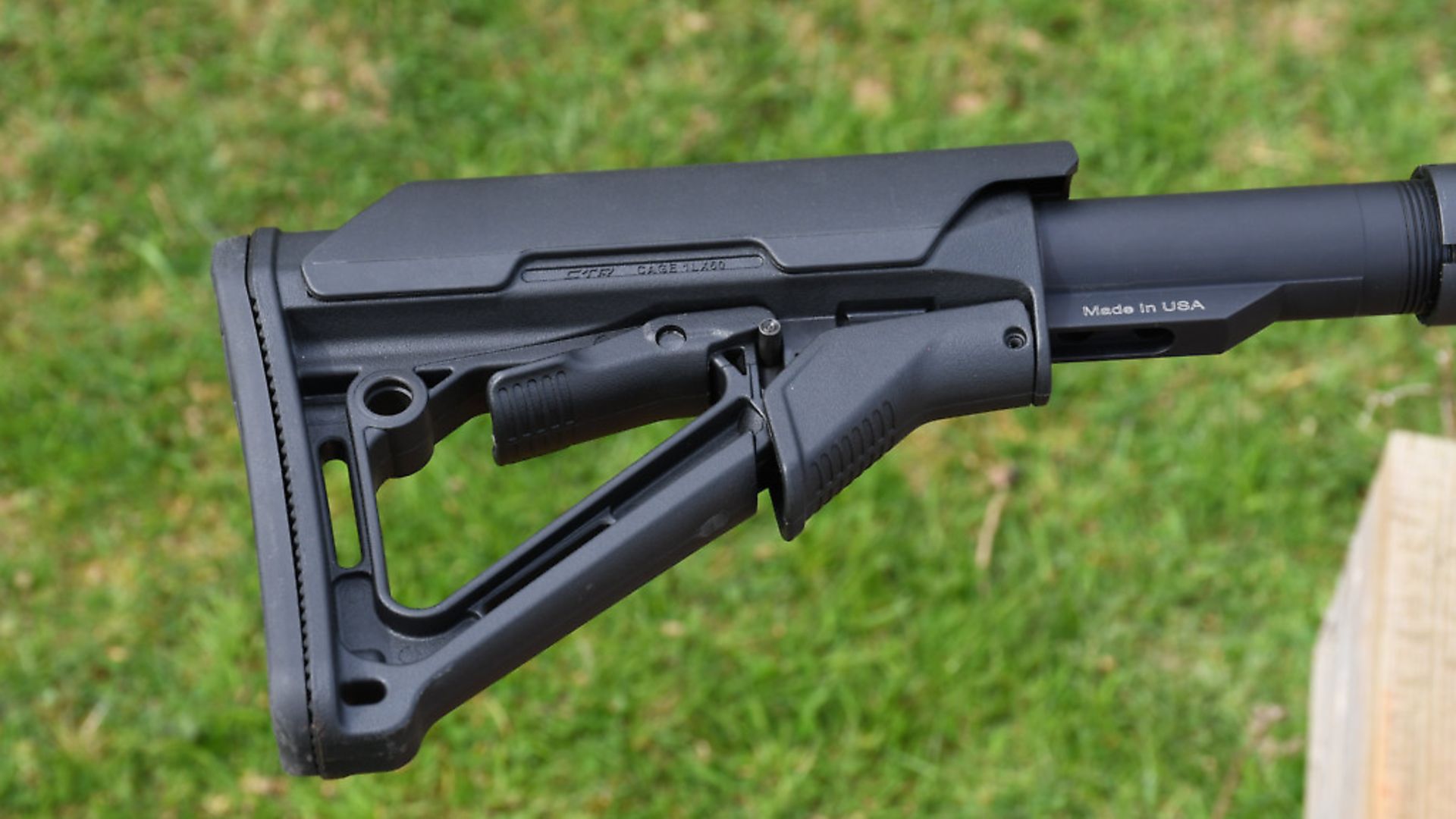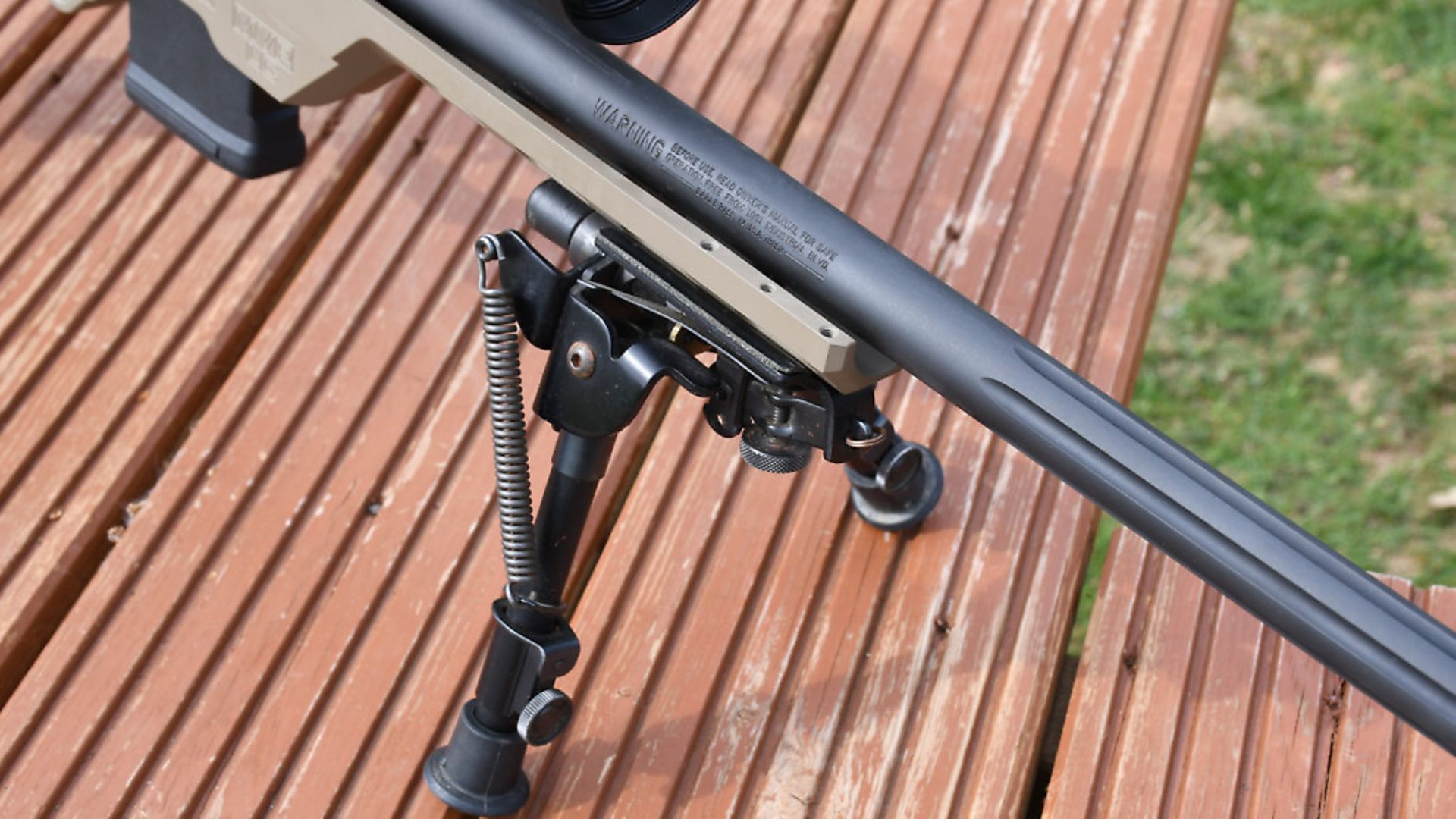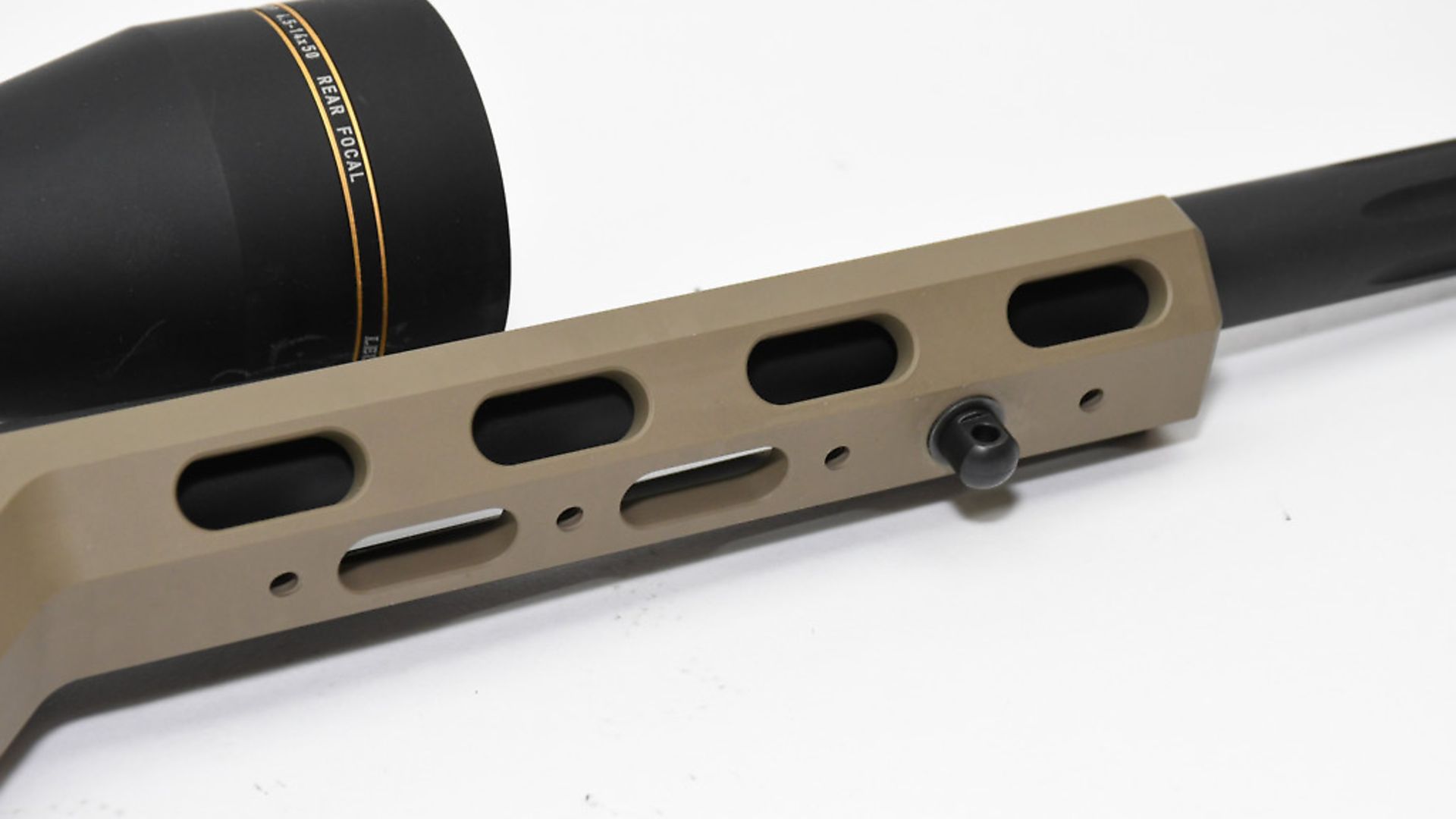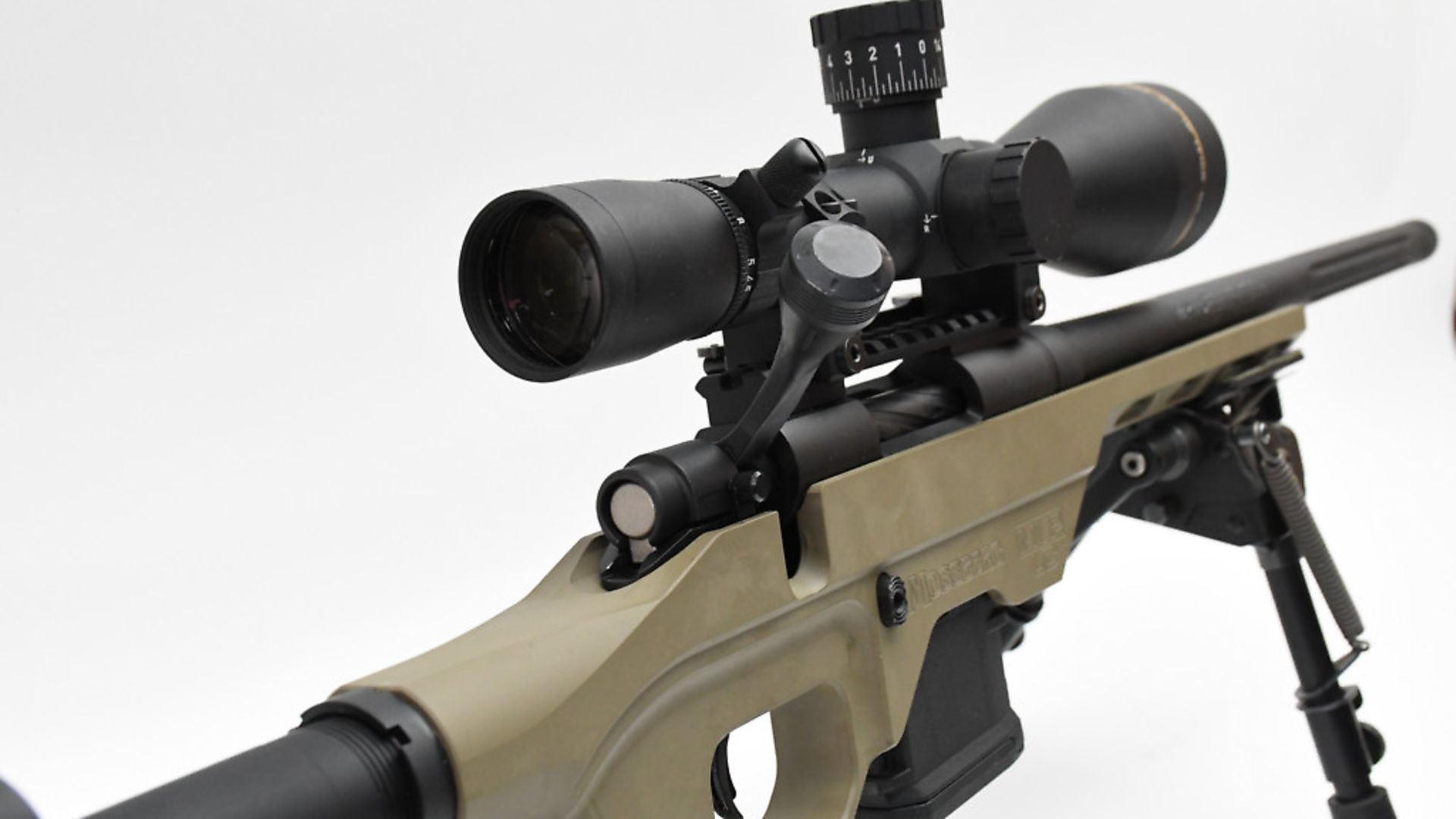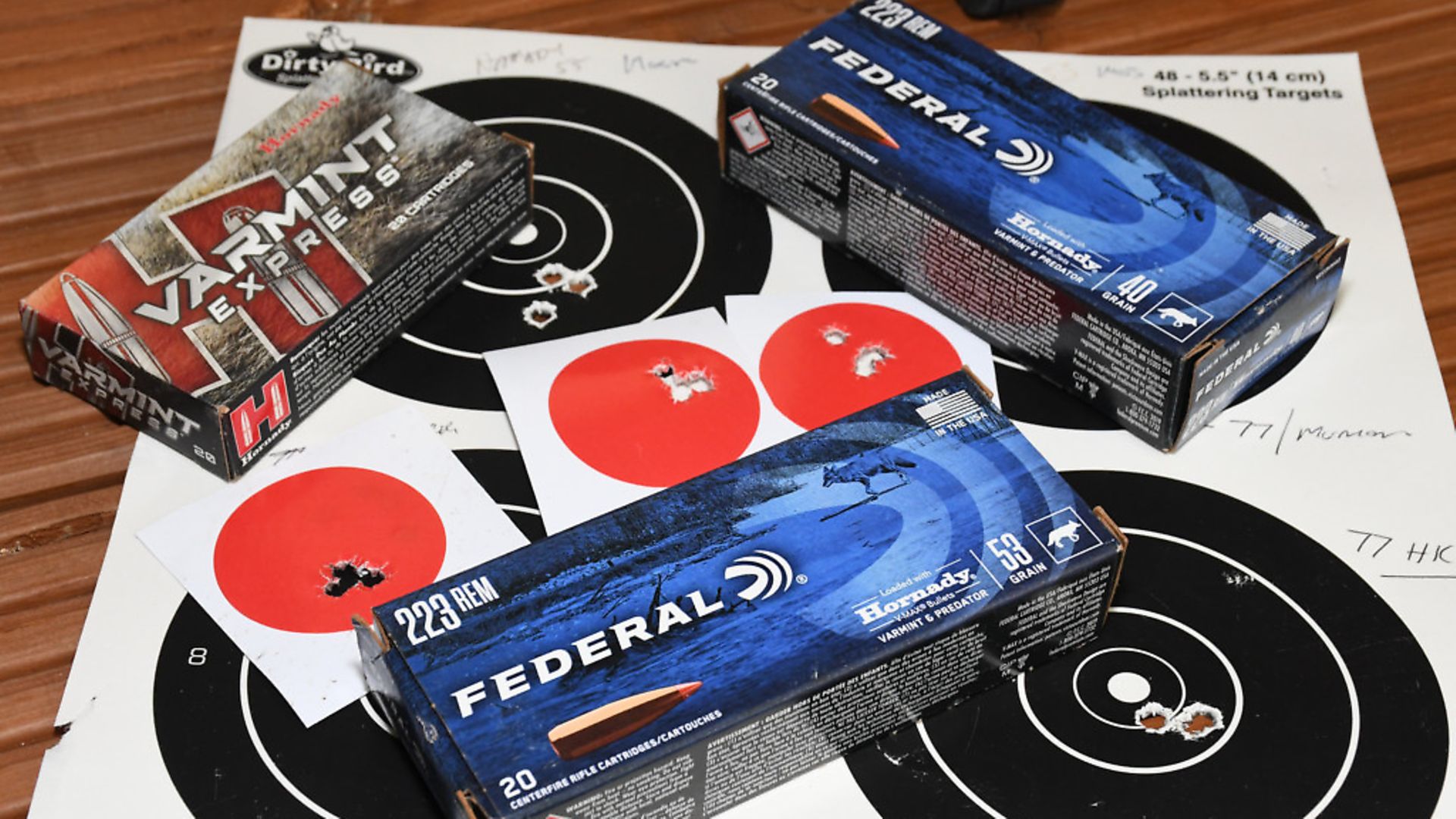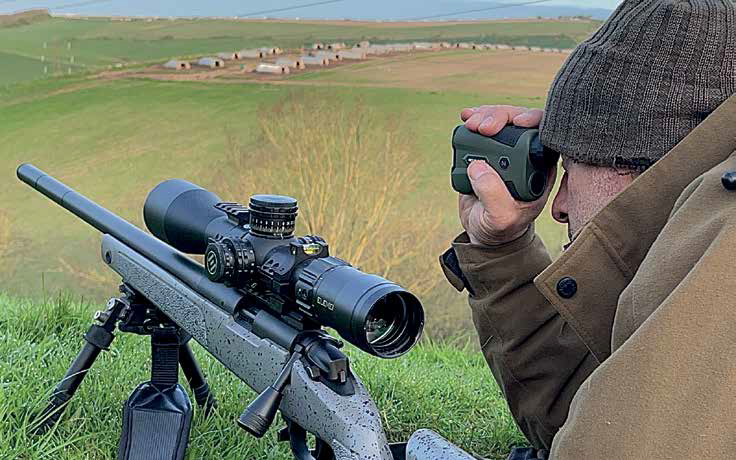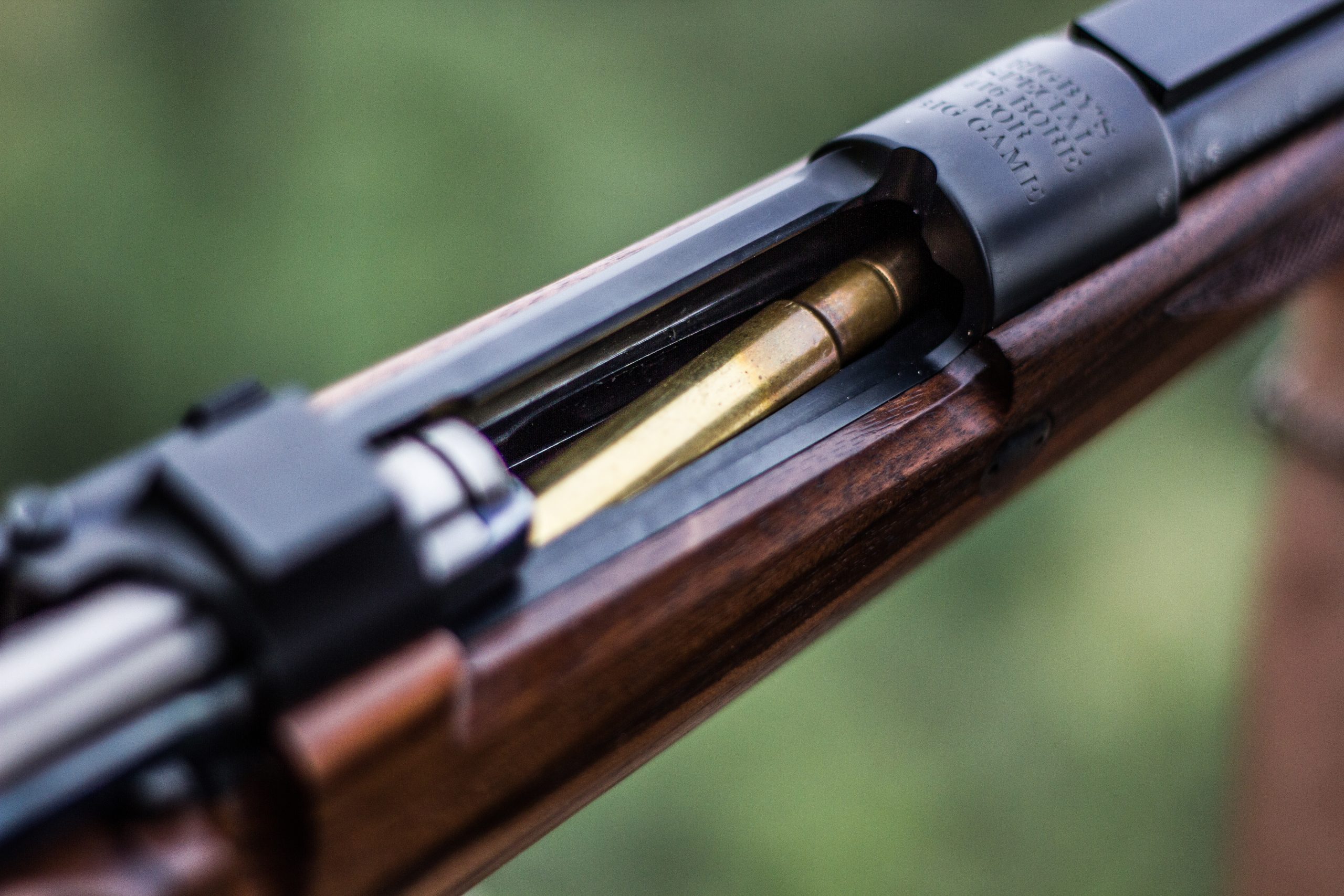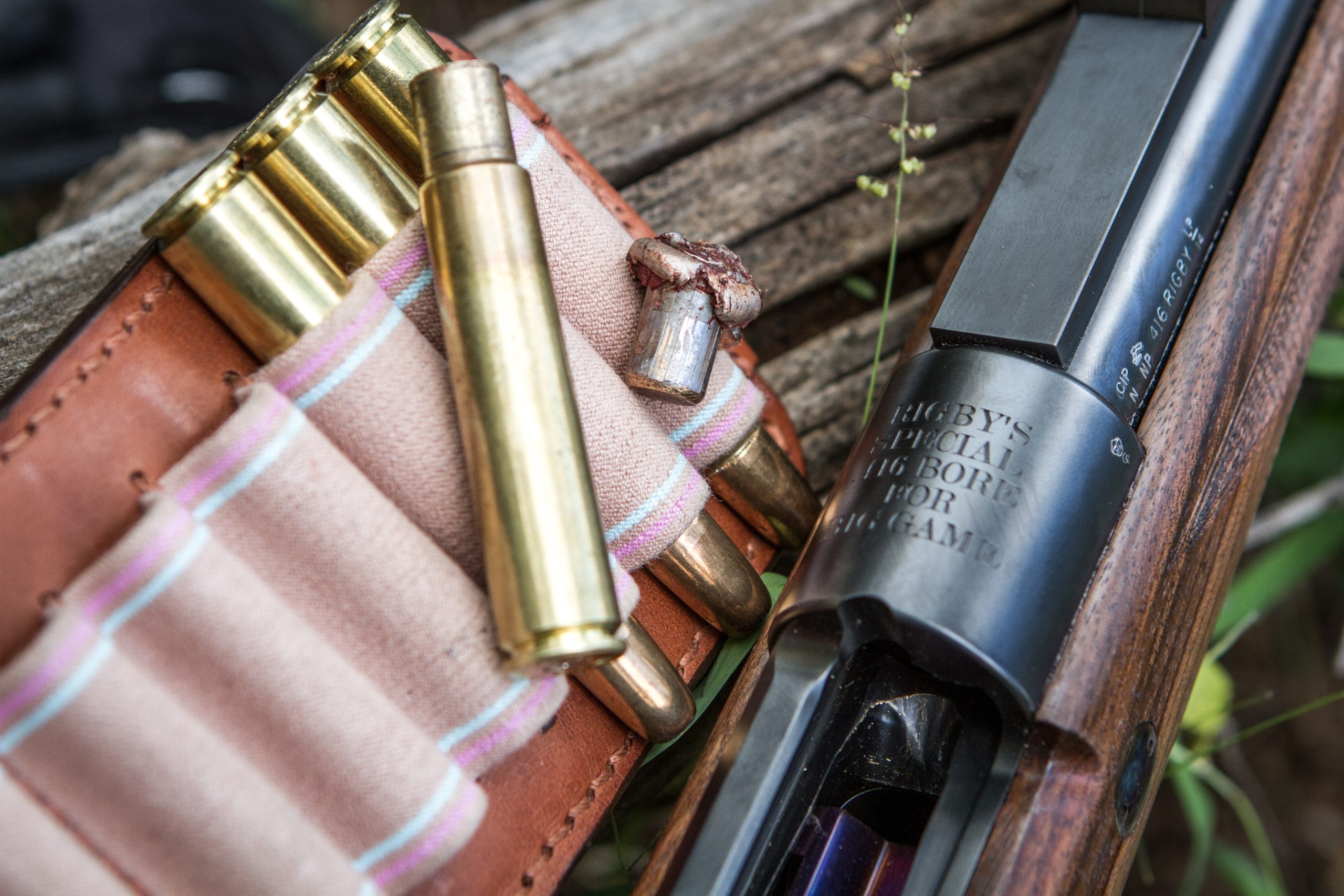MOSSBERG MVP LIGHT CHASSIS IN 5.56-223 REM – test & review
Would you like to appear on our site? We offer sponsored articles and advertising to put you in front of our readers. Find out more.
Mossberg is making its mark on the rifle world! Chris Parkin loved the compact build and machining quality on this Mossberg MVP Light Chassis in 5.56-223 Remington!
MOSSBERG MVP LIGHT CHASSIS IN 5.56-223 REMINGTON – BRIEF OVERVIEW
PROS: Compact rifle perfectly scaled to the diminutive 5.56/223; 7” twist rate can handle heavier bullets; Decent trigger feel; Superb machining standards for action/stock interface
CONS: Intermittent feed issues; Sticky bolt operation
VERDICT: It’s a shame the Mossberg was hampered by bolt and ammo feed issues because it is a very characterful and well-made rifle in every other regard. The barrel shows intrinsic capability but beware of velocity drop, if that’s important to you.
TECH SPECS: Mossberg MVP Light Chassis in 5.56-223 Remington
Barrel: 16”/410mm Button Rifled, Fluted (Twist Rate: 1 in 7”)
Overall Length: 36”/925 mm (at full extension)
Length of Pull: 11-14.25”/279-362mm
Overall Weight: 7.4lbs/3.4 kg
Magazine capacity: 10+1
Stock Material: Aluminium Chassis
CONTACT: Viking Arms
Price: £1,124.64
MOSSBERG MVP LIGHT CHASSIS IN 5.56-223 REMINGTON – DETAILED TEST & REVIEW
Mossberg is a name that most people associate with shotguns, but the MVP range of budget centrefire rifles offers some interesting options to shooters looking to save some cash. I have used the MVP laminate in the past and now Viking Arms have supplied me with the LC (or Light Chassis) rifle built into an aluminium frame. It closely resembles the MDT with an AR-15-style buffer tube and underslung grip, making it compatible with a plethora of shooting accessories for customisation.
The rifle starts with a short 16.25”/410mm button-rifled barrel with the 1 in 7” twist most suited to bullets in the 69+gr weight range. Given the chambering is designated as 5.56 NATO, as well as the more common sporting .223, it ensures that pressure and throat/lead differences in the two similar chamberings cannot cause any safety issues when used with military surplus ammunition.
The muzzle is neatly crowned and threaded ½” UNEF beneath a knurled threadcap with six flutes running just 120mm rearward, certainly more for looks than any great technical benefit. The barrel and receiver sport a matt black finish that seems to avoid gathering skin or dust and has so far shrugged off bumps and grinds during day-to-day testing.
The diameter swells from 19mm at the muzzle to 25mm at the reinforce/tenon entering the receiver. It uses a barrel nut assembly to control headspacing and sandwich the recoil lug with a single gas escape port to the left side of the action adjacent to the bolt abutments within. The receiver is scaled to the minimalist 5.56 cartridge with a 55mm ejection port between the twin action bridges to which the included Picatinny rail is bolted. The bolt carries more useful fluting to aid dispersal of debris in dirty environments with an 88mm stroke length to cycle the action. The 67mm handle is appropriately proportioned to apply correct leverage without stuttering when feeding rounds.
The right side of the bolt shroud carries a two-position safety catch with no bolt-locking facility. The shroud itself shows the action’s condition with the rear section of the firing pin either flush or recessed. Flip to the left to find a simple bolt-release button. The push-button magazine release sits on the lower right side of the chassis below the ejection port, with simple operation allowing it to fall into your waiting hand.
AR-15 magazine compatibility is offered with a polymer P-mag supplied, capable of holding 10 rounds in two staggered columns feeding from either side, AR-15 style. The mag can be loaded from the top with a simple press-down addition or rounds in or out of the rifle and spares are easily available and inexpensive.
The rifle’s bolt is a push-feed unit with sprung-ejector plunger in the lower left side to fling spent cases clear with ease, but although it’s seemingly scaled to the cartridge, the recessed bolt face carries a tongue-like lower flap on the underside of the nose to help engage rounds from the generic AR-15 magazine.
minor minus
This flap is free to rise and drop under its own weight without any kind of spring assistance and seems to be a slightly weak element of the rifle as it occasionally failed to strip and cycle the ammo, specifically from the right-side column of the magazine.
Regardless of ammo length or confirmation of magazine placement, it continued to prove a little inconsistent. A friend of mine has a similar Mossberg in .308 which shows similar build style, but without this underside assistant on the bolt face, and that never misses a beat, so personally I have to question its use.
If it was fitted with a spring to assist its extension, I might feel a little more sympathetic, but it seems risky to me to trust it to repeatedly lower under its own miniscule weight. There were no manufacturing faults or incorrect tolerances regarding magazine placement or fitting, so I was left a little blank.
The second slight annoyance on an otherwise great rifle is also in relation to the bolt. When lifted, the lugs tend to catch on the innards of the abutments somewhere, so after lifting the bolt you have to release upward pressure before it can be drawn smoothly rearward. During my test, I easily overcame both these issues by simply single-loading the rifle and being suitably delicate with the bolt handle.
I cleaned the barrel on receipt of the rifle and a subsequent borescope inspection impressed me, which was later to be proven on test. An internal blade safety trigger is featured, with the trigger itself breaking with 90% crisp feel and breaking predictably at 1,220gr, so no complaints there.
Reach to the blade felt good, with what appeared a slight extension built into the grip’s position on the aluminium chassis, with 75mm reach from the grip to the blade. The supplied grip is a firm, rubberised, slightly stippled Magpul unit, which I found simple but comfortable from either hand, and complemented the rest of the chassis’ ambidextrous layout with its pleasing buff/coyote baked finish.
The finish seemed to avoid any unwanted marks on test, yet I know such guns often look a little cooler with a bit of battle-scarred patina. Magpul also supply the rear end attached to the buffer tube with length of pull adjustment from 14.25”/362mm down to 11”/279mm, giving the stock great versatility and a comfortable fit. Magpul are subtly better than the cheaper imitators – a sturdier locking mechanism and less wobble and rattle.
The polymer carries a similar subtle stippling with a quick-release lever for LOP adjustment and a locking catch to lock everything into position, without the need for any additional tools. Quick-release anchor points are present for sling fitting and the rearmost butt pad is adjustable with a slim 5mm thickness, ideal for the calibre’s level of recoil.
The butt pad is nicely proportioned and just soft enough to anchor the rifle in position without affecting gun mounting speed or security. The standard CTR variant seems to have an additional comb raiser clipped in position. From what I can find, it doesn’t adjust but does give decent levels of additional height for a bolt-action rifle, rather than straight AR-15 derivative, and the 45mm width with a radiused upper felt comfortable.
The rest of the stock is well machined and smoothly finished with a slim forend to balance the proportions with the short barrel.
A fully free-floating barrel is guaranteed by the spacious fit of the stock, with ventilation slots for airflow and drainage or additional accessories. A standard stud is fitted for a bipod for what is a really compact and well-balanced rifle, perfect for fox and vermin control, especially if shooting from a vehicle.
The upper side carries threaded mountings in the machined aluminium for forward mounted optics, but a note of caution: a compact rifle like this doesn’t offer huge amounts of space if a long optic is used. The mag well and boxy yet spacious trigger guard are part of the stock with twin action screws holding chassis to receiver. There is no barricade stop, with a more swooping shape shown at the front of the mag well.
Digging into the guts of the rifle, Mossberg’s inlet, just like the barrel, gave me huge confidence. Releasing the front action screw revealed absolutely zero vertical or lateral barrel movement in the stock and that is a key illustration of well-matched action to stock inletting. It’s all very well boasting CNC this and CNC that, but if tolerances are ignored it doesn’t add up to much. Not so the Mossy, the inlet shows a spacious pocket for the sizable recoil lug to slot into with full contact to transfer firing forces.
The 30.3mm cylindrical action was just that, truly cylindrical throughout, machined to close tolerances and fitted into the stock on twin full length action rails. Add to that a V block for uniform linear support with rails allowing the recoil lug to slot in position. The trigger hangs below, showing an adjustment screw but threadlocked, so I left well alone, I can take the hint. Barrel tenon threads into the action and it looked like the headspace control collar had been peened in position to ensure nobody fiddles with it, but long term, a barrel change is not impossible.
Field test – MOSSBERG MVP LIGHT CHASSIS IN 5.56-223 REM
I first assumed the rifle would prefer heavier match bullets in the 7” twist and it shot OK, but nothing spectacular with 69gr HPBT ammunition – 1.5-2” (38-52mm) groups at my standard 100m test range.
Trigger control was good and the rifle was well balanced and stable with compact dimensions scaled perfectly for balance, coupled with the minimal recoil of a 5.56/.223.
The gun had a nice light, snappy feel, with a recoil punch that was easily controlled and I had no desire to use a moderator for a change.
All characteristics would be further subdued by a moderator (or if you must, a brake), but 5.56/.223 is so modest – sometimes it’s good to feel a little unrestricted rifle recoil. I swapped over ammunition to Federal Varmint loads with 40gr and 53gr Hornady V-Max bullets and the gun came alive.
Twist rates are easily measurable and rarely lie, but in this case the light bullets, likely due to superior ammunition quality from Federal and Hornady, proved the gun’s capability and reliability, which I have no doubt would have continued onto 60-62gr running factory ammo.
I love the 69 and 77gr Sierra TMKs, but sadly my standard handloads were not suited to this rifle’s 60.6mm/2.390” maximum magazine length, so I stayed with factory loads.
40gr Federal showed healthy 0.75” three-round group averages with the slightly fussier bullet shape of the 53gr V-Max scoring 0.9”, well below MOA, given the 109-yard test range.
The best group of the day was when I shot with the 55gr Hornady V-Max at 0.6”. All were three-round groups – perhaps not as statistically reliable as a five-rounder or a 25-round string in five groups, as benchrest is scored. What was important for me was the consistency and lack of difficulty accessing the accuracy from the rifle.
The 16” barrel did decimate muzzle velocity though – printed velocity for the 40gr Federal was 3800 fps, which (although usually 100-150 adrift of most rifles) was restricted to 3072 fps. Similarly, the 53gr Federal suggested 3400 fps, which dropped to 2623 fps, and Hornady’s 3240 Varmint Express produced 2702 average. Super short barrels have handling benefits at the cost of velocity.
It is such a shame the magazine feed problem and sticky bolt were present, because the overall compact feel and liveliness of the Mossberg was quite refreshing, with honest performance straight out of the box.
Later testing with some 69gr handloads prepared for a shorter ‘cartridge overall length’ (COL) than my rifle’s usual ammo repeatedly beat the half-inch group threshold that’s so often sacred to target shooters.
Although the mag feed issues didn’t help, I’m pleased with the barrel quality, direct trigger and excellent stock/action internal fit, which all contributed to the gun’s performance. The rifle was simple to set up, and the easy scope mounting and wide variety of accessories all add up to make this Mossberg a very customisable light chassis rifle.
Related articles
AN ICELANDIC SAGA
A relentless search across Iceland’s volcanic landscapes takes Simon K Barr to the ultimate prize – a mature bull reindeer and an unforgettable hunting experience
By Time Well Spent
Get the latest news delivered direct to your door
Subscribe to Rifle Shooter
Elevate your shooting experience with a subscription to Rifle Shooter magazine, the UK’s premier publication for dedicated rifle enthusiasts.
Whether you’re a seasoned shot or new to the sport, Rifle Shooter delivers expert insights, in-depth gear reviews and invaluable techniques to enhance your skills. Each bi-monthly issue brings you the latest in deer stalking, foxing, long-range shooting, and international hunting adventures, all crafted by leading experts from Britain and around the world.
By subscribing, you’ll not only save on the retail price but also gain exclusive access to £2 million Public Liability Insurance, covering recreational and professional use of shotguns, rifles, and airguns.
Don’t miss out on the opportunity to join a community of passionate shooters and stay at the forefront of rifle technology and technique.



